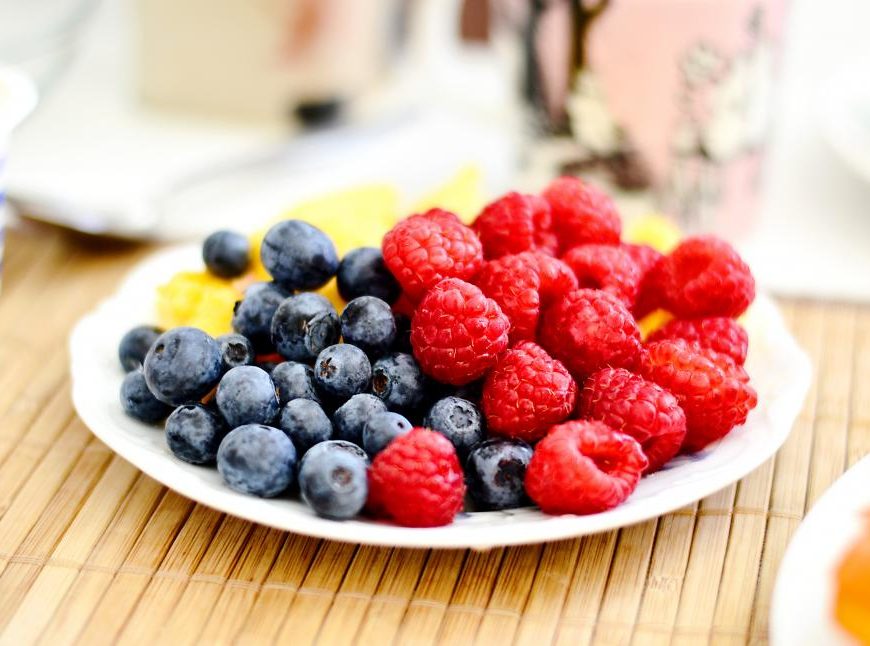Stuck on a low carb diet? Fearing the dreaded weight gain when you reintroduce carbs? Even Paleo advocates can benefit from this.
Carb Cycling does not involve eating less, it is a smart way of timing your macronutrients (carbs, fat and protein) to maximise muscle gain and fat loss. It may not result in “weight” loss. Although, it should improve your body composition and result in fat loss, which is more beneficial.
Often people find it difficult to build muscle and sustain a workout without carbs. Yet we are told to avoid them due to their negative effects on insulin and body fat. How do we get around this? Carb cycling!
Benefits:
Carb cycling shocks the metabolism and sparks your metabolic fire.
Carbs have a higher thermic effect than fats. Thermic effect is the amount of energy from the food that is used up during processing in our body. The net calories that we absorb is what is left over after these percentages. The thermic effect of carbs is 5-15%, while the thermic effect of fats is 3-4%. The thermic effect of protein is 30-35% which is why high protein diets are effective for weight loss.
Carbs are a major source of micronutrients. By limiting them, you may also be limiting your intake of vitamins and minerals. A varied diet is recommended for ensuring a broad range of nutrients.
Carbs are anabolic and fat is catabolic, in general. Carbs are protein sparing. To understand this, I need to introduce you to the nervous system. Our autonomic nervous system is split into two branches. The sympathetic nervous system (SNS) and the parasympathetic nervous system (PNS). The SNS is in charge of fight, flight and freeze, while the PNS is responsible for rest, digest and repair. While the SNS is dominant, it primarily uses glucose from carbohydrate as fuel. While the PNS is dominant, fat is the primary fuel source. What happens when we eat a low carb diet and do not have glucose available? We switch straight into fat burning right? Well, no surprisingly. Fat cannot convert into glucose, but amino acids from protein can. Once dietary protein is depleted, our body starts breaking down muscle tissue for energy. So under stress our fuel source is glucose then amino acids, with small amounts of fat. During relaxation, our fuel source is fat then fat, because our bodies have an endless supply. The point is… during times of stress (which is common these days) and even intense exercise, carbs can be used as energy while protein is saved for muscle growth. This prevents amino acids being wasted as an energy source.
From personal, clinical and anecdotal experience, I have discovered that healthy levels of insulin are imperative for thyroid function. Worsening of hypothyroidism is common in followers of LCHF (low carb high fat) and Paleo diets. It is not to blame for thyroid abnormalities, but may worsen pre-existing conditions. Carbs promote insulin, while fat has no effect on insulin. Insulin is released in response to blood glucose. Carbs increase blood glucose, but fat does not. Insulin has a bad reputation, but it is not all bad. Healthy levels of insulin are beneficial for muscle growth and thyroid function.
How to Carb Cycle:
- HCLF (high carb low fat) 1-3 days per week, average 2 (depending on your activity level)
- Keep total calories consistent, aligned with your goal
- Reduce fat intake on carb days. LCHF or HCLF, not HCHF because that means low protein
- Approx. calorie ratios I recommend on HCLF days: carbs 50-55%, fat 20-25% and 20-30% protein (average 25%). HFLC days: carbs 15-20%, fat 55-60% and protein 20-30%. Note: 15-20% protein is an average diet, 20-30% is a good amount (25% is a good average). Over 30% is unnecessarily high, amino acids will be converted into glucose for energy. Over 35% long-term may cause kidney damage
- HCLF on a sprint, cardio or heavy weight training day, to maximise benefits
- Good sources of carbs include fruit, root vegetables, wholegrains and legumes. Do not forget micronutrients (vitamins and minerals), variety!
Warning:
Your weight will increase on HCLF days. This is glycogen (stored carbohydrate) and water retention. For every gram of stored glycogen, we store 3 grams of water. It is not fat. This adds bulk to muscles and fuels them for the next workout. Your weight will reduce again on HFLC days.
Carb cycling provides the best of both worlds. This allows you to build muscle and lose fat at the same time (almost… on different days). There is a problem with eating a conventional balanced diet of carbs, fat and protein in one meal. Carbs and fat are both energy sources, but only one is used as energy after the meal. So what happens to the other one? It is stored. What is energy stored as? Fat.
Carb cycling is a great n=1 Self Experiment to try!
I would love to hear your stories,




